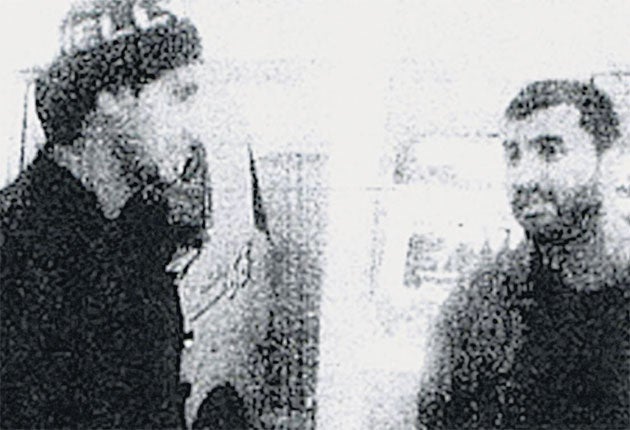MI5's chance for supergrass to identify 7/7 ringleader

The security services missed an opportunity to identify the ringleader of the 7/7 terrorist attacks because a surveillance photograph of him which could have been shown to an overseas source was poorly copied.
The inquest into the 2005 attacks on London's transport system heard yesterday that MI5 officers had taken covert photographs of Mohammed Sidique Khan and his co-bomber Shehzad Tanweer in February 2004 at a Toddington service station. The pair has been tailed by security agents as they returned from a trip to West Sussex, where they had met with a group of extremists who were later convicted over a plot to attack a shopping centre using a fertiliser bomb.
The original colour photographs, which were shown in court yesterday, were of good quality and revealed Khan and Tanweer's faces in detail. But black-and-white copies that were meant to be sent to al-Qa'ida "supergrass" Mohammed Junaid Babar had been cropped so poorly that only the photograph of Tanweer was sent.
Babar was an al-Qa'ida informant who had trained in Pakistan and agreed to co-operate with the Americans after he was taken into custody. In April 2004, he told MI5 that two men from West Yorkshire, called "Ibrahim" and "Zubair", had travelled to a terrorist training camp in Pakistan the previous year. It was later learned that Ibrahim was Khan – and although Babar had never met Tanweer, he had met Khan. Had he been shown a good photograph of the 30-year-old extremist, he might have been able to identify him more than a year before the attacks.
The revelation was the culmination of a compelling day in court, in which a top spy said MI5 felt "profound regret" over failing to prevent the bombings. The officer, referred to as Witness G, said Britain's security services had "no inkling" of the 7/7 attacks and that any suggestion otherwise would be "nonsensical and offensive".
It is highly unusual for an intelligence agent to give evidence publicly, let alone one as senior as Witness G, who is chief of staff to MI5's director Jonathan Evans. He is the first MI5 agent to be questioned in public on the bombings in which Khan, Tanweer, Hasib Hussain and Germaine Lindsay killed 52 people in four co-ordinated suicide attacks.
Families of the bereaved were in court to see the spy give evidence. But reporters, who had to watch proceedings from a tent outside the courtroom, could only hear his voice. Before the hearing began, one of the lawyers told the inquest that there was "a degree of unhappiness" among some relatives that Witness G was the only secret service agent called to give evidence.
MI5 chiefs have previously told the Intelligence and Security Committee that Britain's security services were trying to disrupt a huge number of bomb plots and terrorist cells at the time of the attacks. Speaking in clipped tones, Witness G said the workload meant officers had to "prioritise ruthlessly" where they placed vital resources.
In his witness statement, the MI5 officer said that although they had identified Khan and Tanweer through other known extremist networks, there was no indication that they were planning attacks in the UK or that they presented a "a real and immediate risk to the public".
His evidence also revealed some of the limitations of intelligence gathering on terrorist suspects. Although MI5's budget has tripled since 2001, the effects of those increases were only felt in 2006, he said. The officer added that by 2005, MI5 was trying to keep tabs on 800 primary investigative targets.
He said that although Khan's name had cropped up in at least seven separate pieces of intelligence prior to the 7 July attacks, the security services' software systems had failed to make the link – either because his name was too common or because they had simply not been passed the information.
Asked by Hugo Keith QC, counsel to the inquests, whether recent computer improvements would mean that Khan would now be flagged, Witness G replied: "It really will depend on how unique the name is. Software has improved. Fuzzy searching is better than it was but it is still a long way from perfect."
Witness G was keen to stress that the security services simply could not keep track of every potential terrorist threat. "There are many more now," he said. "There are more significant targets in the UK at any one time than we have the ability to properly investigate."
Asked why al-Qa'ida supergrass Babar was only shown a poor-quality photograph of Tanweer and not one of Khan, Witness G said: "I can only speculate here because we don't know exactly why. The judgement we formed was that the cropped photograph of [Khan] was probably such poor quality it wasn't worth showing, but I don't have any contemporaneous documentation."
Subscribe to Independent Premium to bookmark this article
Want to bookmark your favourite articles and stories to read or reference later? Start your Independent Premium subscription today.
